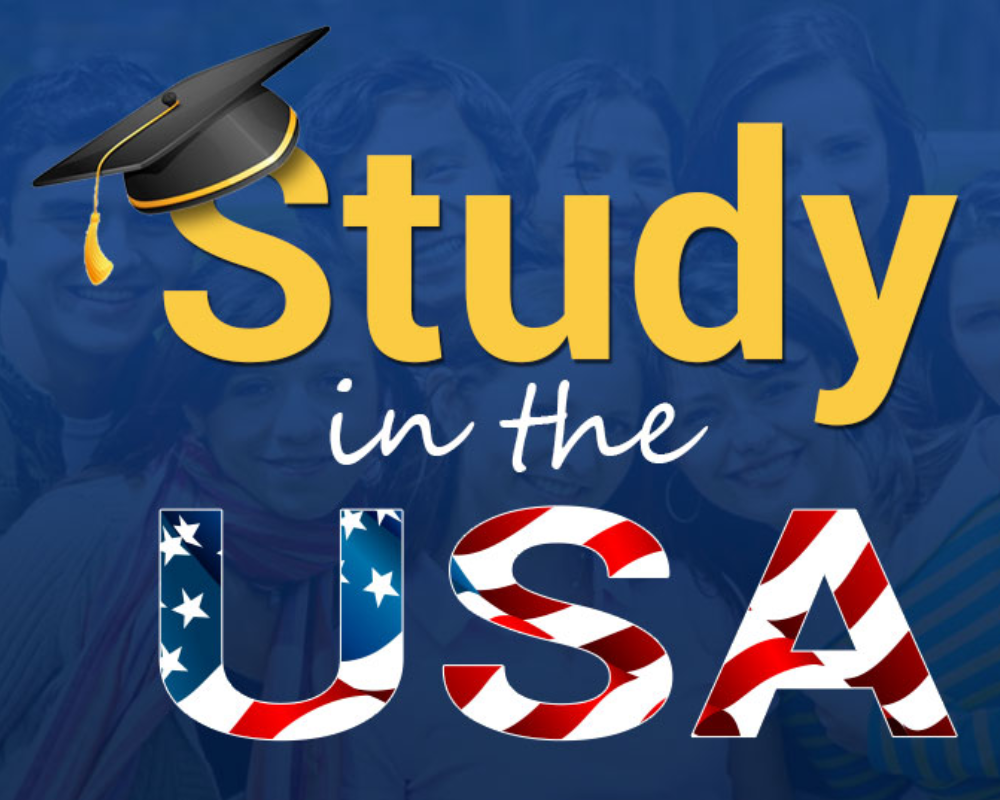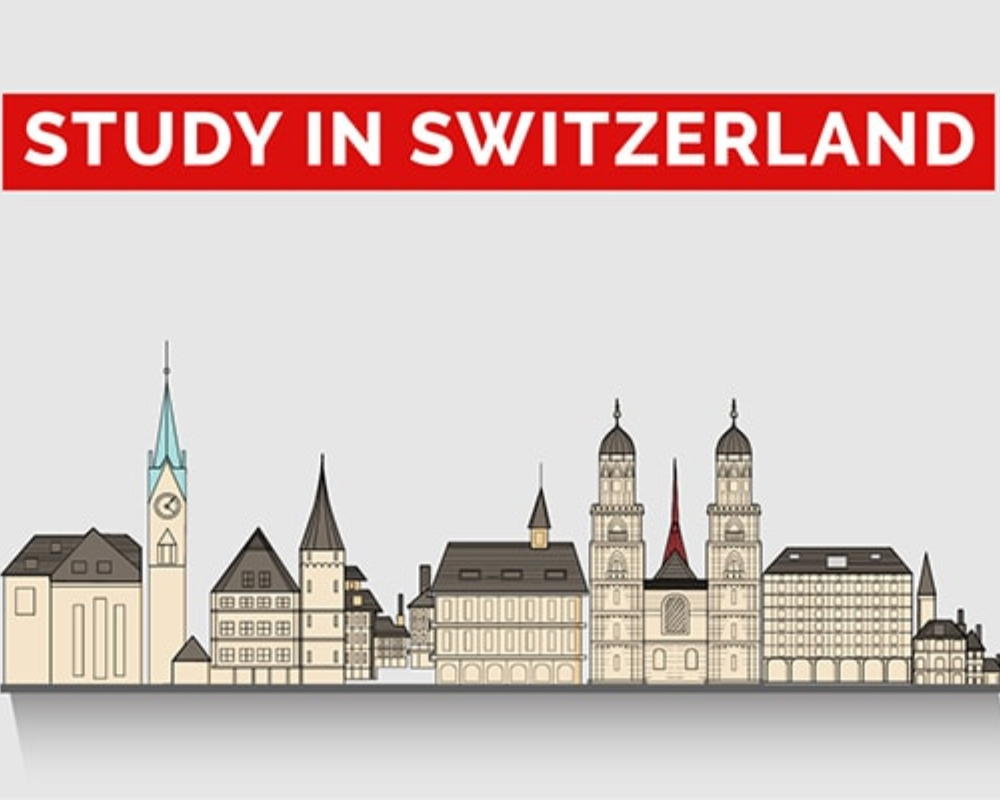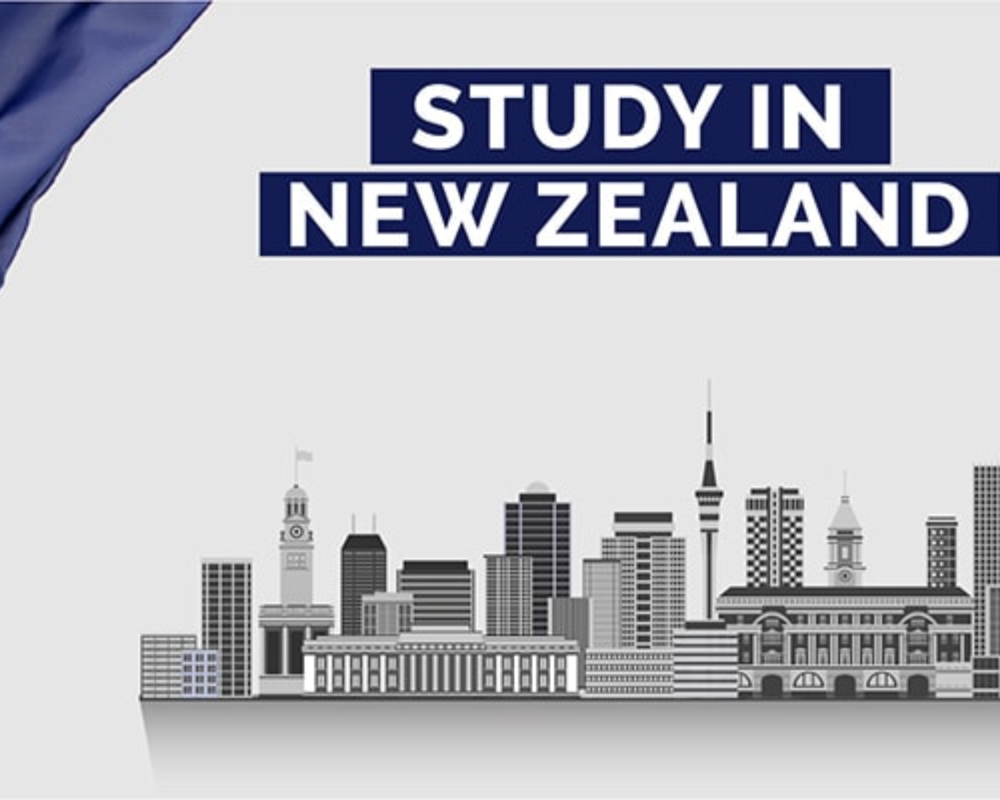Study Abroad
- Home
- Study Abroad

Study in USA
ITPROHUB offers comprehensive support for students aspiring to study IT in the USA. Our services guide you through every step of the process, from choosing the right university and program to navigating the application and visa procedures. We provide insights into top institutions known for their cutting-edge technology and industry connections, ensuring you gain practical experience and advanced skills. Our team also offers personalized counseling to help you make informed decisions about your educational and career goals. With ITPROHUB, you’ll be well-prepared to embark on an enriching educational journey in the USA and launch a successful international IT career.
Why Choose USA?
Expert Guidance
Receive personalized support from experienced advisors who understand the nuances of IT education and U.S. admissions.
Expert Guidance
Receive personalized support from experienced advisors who understand the nuances of IT education and U.S. admissions.
Comprehensive Services
From selecting the right university and program to handling application processes and visa requirements, we cover all aspects of your journey.
Comprehensive Services
From selecting the right university and program to handling application processes and visa requirements, we cover all aspects of your journey.
Tailored Solutions
Get customized advice based on your academic background, career goals, and preferences to ensure the best fit for your needs.
Tailored Solutions
Get customized advice based on your academic background, career goals, and preferences to ensure the best fit for your needs.
Frequently Asked Questions?
Requirements typically include a valid passport, acceptance letter from a U.S. institution, proof of financial support, and a student visa (F-1 or J-1). English proficiency tests like TOEFL or IELTS may also be required.
Consider factors such as program specialization, location, campus facilities, faculty, and overall reputation. Research and compare universities and programs based on your career goals and academic interests.
The application process generally involves completing an application form, submitting transcripts, standardized test scores, letters of recommendation, a personal statement, and proof of English proficiency. Some programs may also require an interview.
Apply for a student visa (F-1 or J-1) by filling out the DS-160 form, paying the SEVIS fee, scheduling a visa interview at a U.S. embassy or consulate, and providing necessary documents like the Form I-20 or DS-2019, passport, and proof of financial support.
Costs include tuition fees, living expenses, health insurance, books, and other personal expenses. Tuition fees vary by institution and program, so it’s important to research and plan your budget accordingly.
Yes, international students on an F-1 visa can work on-campus up to 20 hours per week during the academic year and full-time during breaks. Off-campus work requires specific authorization, such as Optional Practical Training (OPT) or Curricular Practical Training (CPT).
Accommodation options include on-campus housing, off-campus apartments, or shared houses. Many universities offer housing services to assist students in finding suitable accommodation.

Study in UK
ITPROHUB provides expert guidance for students pursuing IT education in the UK. Our comprehensive services include assistance with selecting top UK universities and IT programs, navigating the application process, and securing student visas. We offer tailored support to match your academic background and career aspirations, ensuring you find the best fit for your goals. Our team also provides help with preparing necessary documentation, including personal statements and recommendation letters. With ITPROHUB, you gain access to quality education and industry connections in the UK, setting the stage for a successful IT career and a rewarding international experience.
Why Choose Study in UK?
Expert Guidance
Receive personalized advice from professionals with extensive knowledge of UK universities and IT programs, ensuring you make informed decisions for your education and career.
Expert Guidance
Receive personalized advice from professionals with extensive knowledge of UK universities and IT programs, ensuring you make informed decisions for your education and career.
Comprehensive Support
Benefit from end-to-end assistance, including application preparation, visa processing, and documentation, making your journey to studying in the UK smooth and hassle-free.
Comprehensive Support
Benefit from end-to-end assistance, including application preparation, visa processing, and documentation, making your journey to studying in the UK smooth and hassle-free.
Career-Enhancing Opportunities
Gain access to top UK institutions with strong industry connections, providing you with valuable skills, hands-on experience, and networking opportunities for a successful IT career.
Career-Enhancing Opportunities
Gain access to top UK institutions with strong industry connections, providing you with valuable skills, hands-on experience, and networking opportunities for a successful IT career.
Frequently Asked Questions?
Requirements include a valid passport, an offer letter from a UK institution, proof of sufficient funds to cover tuition and living expenses, and a student visa (Tier 4). Proof of English language proficiency through tests like IELTS or TOEFL may also be required.
Consider factors such as program specialization, university ranking, location, course content, and career prospects. Research universities and compare programs based on your academic and career goals.
The process typically involves completing an application form through UCAS (for undergraduate programs) or directly to the university (for postgraduate programs), submitting academic transcripts, personal statements, recommendation letters, and proof of English proficiency.
Yes, students on a Tier 4 visa can work up to 20 hours per week during term time and full-time during holidays. Certain conditions apply, so it’s important to check specific visa restrictions.
Accommodation options include university halls of residence, private student accommodation, and rented apartments or houses. Many universities offer assistance in finding suitable housing.
International students in the UK are covered by the National Health Service (NHS). However, it is advisable to have additional health insurance to cover any extra medical needs or private healthcare.
Engage in campus activities, join student organizations, connect with other international students, and seek support from university services to help with cultural adaptation and settling in.

Study in Canada
ITPROHUB provides expert support for students aiming to study IT in Canada. Our services include personalized advice on selecting top Canadian universities and IT programs, guiding you through the application process, and assisting with study permit applications. We help you prepare all necessary documentation and ensure a smooth transition to studying in Canada. With our comprehensive support, you gain access to high-quality education and practical experience through leading institutions, setting the foundation for a successful IT career. Trust ITPROHUB to navigate the complexities of studying abroad and make your educational journey in Canada a rewarding experience.
Why Choose Study in UK?
Expert Guidance
Benefit from personalized advice from experienced advisors who specialize in Canadian education, helping you select the best institutions and programs to match your IT career goals.
Expert Guidance
Benefit from personalized advice from experienced advisors who specialize in Canadian education, helping you select the best institutions and programs to match your IT career goals.
Comprehensive Support
Receive end-to-end assistance with application processes, study permit acquisition, and documentation, ensuring a smooth transition to studying in Canada without any hassles.
Comprehensive Support
Receive end-to-end assistance with application processes, study permit acquisition, and documentation, ensuring a smooth transition to studying in Canada without any hassles.
Career-Enhancing Opportunities
Access top Canadian universities with strong industry connections and practical learning opportunities, equipping you with the skills and network needed for a successful IT career.
Career-Enhancing Opportunities
Access top Canadian universities with strong industry connections and practical learning opportunities, equipping you with the skills and network needed for a successful IT career.
Frequently Asked Questions?
Requirements typically include a valid passport, an offer letter from a Canadian institution, proof of sufficient funds to cover tuition and living expenses, and a study permit. Proof of English or French language proficiency through tests like IELTS, TOEFL, or TEF may also be required.
Consider factors such as program specialization, university ranking, location, course content, and career opportunities. Research and compare Canadian universities and programs based on your academic and career objectives.
The process involves completing an application form, submitting academic transcripts, a personal statement, letters of recommendation, and proof of language proficiency. Applications are typically submitted directly to the university or through provincial application services.
Apply for a study permit online or through a Canadian visa application center. You will need to provide documents such as the letter of acceptance from a designated learning institution (DLI), proof of financial support, and medical exams if required.
Tuition fees vary by institution and program, typically ranging from CAD 7,000 to CAD 29,000 per year for undergraduate programs and CAD 8,000 to CAD 40,000 for postgraduate programs. Living costs can range from CAD 10,000 to CAD 15,000 annually.
Yes, students with a valid study permit can work up to 20 hours per week during academic sessions and full-time during scheduled breaks without a separate work permit. Co-op or internship programs may require a work permit.
Accommodation options include on-campus housing, private student residences, and rental apartments or houses. Many universities provide assistance in finding suitable housing.

Study in Australia
ITPROHUB offers specialized guidance for students pursuing IT education in Australia. Our comprehensive services include personalized advice on selecting top Australian universities and IT programs, navigating the application process, and obtaining student visas. We assist with preparing necessary documents, including personal statements and academic transcripts, ensuring a seamless transition to studying in Australia. By choosing ITPROHUB, you gain access to high-quality education, industry-relevant skills, and valuable networking opportunities at renowned Australian institutions. Our expert support helps you make informed decisions and achieve your academic and career goals in the vibrant and dynamic field of IT.
Why Choose Study in Australia?
Personalized Expertise
Receive tailored advice from professionals with deep knowledge of Australian IT programs and universities, ensuring you find the best fit for your educational and career objectives.
Personalized Expertise
Receive tailored advice from professionals with deep knowledge of Australian IT programs and universities, ensuring you find the best fit for your educational and career objectives.
End-to-End Assistance
Benefit from comprehensive support throughout the application process, including visa guidance, document preparation, and admissions counseling, for a smooth transition to studying in Australia.
End-to-End Assistance
Benefit from comprehensive support throughout the application process, including visa guidance, document preparation, and admissions counseling, for a smooth transition to studying in Australia.
Career-Enhancing Opportunities
Access top Australian institutions known for their strong industry connections and practical IT programs, providing you with valuable skills and networking opportunities for a successful career.
Career-Enhancing Opportunities
Access top Australian institutions known for their strong industry connections and practical IT programs, providing you with valuable skills and networking opportunities for a successful career.
Frequently Asked Questions?
Requirements typically include a valid passport, an offer letter from an Australian institution, proof of sufficient funds to cover tuition and living expenses, and a student visa. Proof of English language proficiency through tests like IELTS or TOEFL is also usually required.
Consider factors such as program specialization, university rankings, course content, location, and career opportunities. Research Australian universities and programs to find the best fit for your academic and career goals.
Apply for a student visa (subclass 500) online through the Australian immigration website. You will need to provide documents such as the Confirmation of Enrollment (CoE), proof of financial support, health insurance (OSHC), and possibly a medical exam.
Tuition fees vary by institution and program, typically ranging from AUD 20,000 to AUD 45,000 per year for undergraduate programs and AUD 22,000 to AUD 50,000 for postgraduate programs. Living costs can range from AUD 15,000 to AUD 25,000 annually.
Yes, international students on a student visa can work up to 40 hours per fortnight during the academic term and unlimited hours during semester breaks. Make sure to check visa conditions for specific restrictions.
Accommodation options include on-campus housing, private student accommodation, and rental apartments or houses. Many universities offer assistance in finding suitable accommodation.
International students are required to have Overseas Student Health Cover (OSHC) for the duration of their stay in Australia. This insurance provides coverage for medical and hospital expenses.

Study in Ireland
ITPROHUB offers specialized support for students aiming to study IT in Ireland. Our services include expert guidance on selecting top Irish universities and IT programs, personalized assistance with the application process, and help with securing student visas. We ensure you are well-prepared with all necessary documentation, including proof of financial support and English language proficiency. By choosing ITPROHUB, you benefit from access to high-quality education in a vibrant and technologically advanced environment. We provide comprehensive support to make your transition to studying in Ireland smooth and successful, setting the stage for a bright future in the IT industry.
Why Choose Study in Ireland?
Expert Knowledge
Gain personalized advice from seasoned professionals familiar with Ireland's top IT programs and universities, ensuring you choose the best fit for your academic and career aspirations.
Expert Knowledge
Gain personalized advice from seasoned professionals familiar with Ireland's top IT programs and universities, ensuring you choose the best fit for your academic and career aspirations.
Full-Service Support
Benefit from comprehensive assistance with every step of the process, including application preparation, visa acquisition, and document management, making your transition to studying in Ireland seamless and stress-free.
Full-Service Support
Benefit from comprehensive assistance with every step of the process, including application preparation, visa acquisition, and document management, making your transition to studying in Ireland seamless and stress-free.
Quality Education and Opportunities
Access premier Irish institutions known for their innovative IT programs and strong industry connections, providing you with valuable skills and networking opportunities for a successful career in technology.
Quality Education and Opportunities
Access premier Irish institutions known for their innovative IT programs and strong industry connections, providing you with valuable skills and networking opportunities for a successful career in technology.
Frequently Asked Questions?
Requirements generally include a valid passport, an acceptance letter from an Irish institution, proof of sufficient funds to cover tuition and living expenses, and a student visa. Proof of English language proficiency through tests like IELTS or TOEFL is often required.
The process involves completing an application form, submitting academic transcripts, a personal statement, letters of recommendation, and proof of English proficiency. Applications are usually made directly to the university or through the CAO system for undergraduate programs.
Apply for a student visa by completing the online application form, paying the visa fee, and submitting required documents such as the letter of acceptance, proof of financial support, and evidence of health insurance. You may also need to provide biometric information and attend an interview.
Yes, international students on a study visa can work up to 20 hours per week during term time and up to 40 hours per week during holidays. Specific visa conditions apply, so check the details for any restrictions.
Accommodation options include university-managed residences, private student housing, and rented apartments or houses. Many universities offer assistance in finding suitable housing.
International students in Ireland are required to have health insurance. Some universities offer their own insurance plans, while others may require students to purchase private health insurance.
Contact the international student office at your chosen university, consult with educational advisors like ITPROHUB, and refer to resources provided by Irish universities and government immigration websites for further information and assistance.

Study in Switzerland
ITPROHUB offers expert guidance for students seeking IT education in Switzerland. We provide tailored support in selecting prestigious Swiss universities and IT programs that align with your academic and career goals. Our services include assistance with the application process, preparation of essential documents, and securing student visas. With our help, you gain access to top-tier education in a country known for its innovation and quality of life. We ensure a smooth transition to studying in Switzerland, allowing you to focus on your studies and career development. Choose ITPROHUB for comprehensive support and a rewarding educational experience in Switzerland.
Why Choose Study in Australia?
Specialized Expertise
Receive tailored guidance from experts who understand Switzerland’s top IT programs and universities, helping you select the best educational path for your career goals.
Personalized Expertise
Receive tailored advice from professionals with deep knowledge of Australian IT programs and universities, ensuring you find the best fit for your educational and career objectives.
Comprehensive Assistance
Enjoy full support with every aspect of the application process, including document preparation, visa applications, and transitioning to life in Switzerland, ensuring a smooth and efficient experience.
Comprehensive Assistance
Enjoy full support with every aspect of the application process, including document preparation, visa applications, and transitioning to life in Switzerland, ensuring a smooth and efficient experience.
World-Class Education
Benefit from access to Switzerland’s renowned institutions known for their cutting-edge IT programs and global connections, providing you with exceptional education and valuable career opportunities.
World-Class Education
Benefit from access to Switzerland’s renowned institutions known for their cutting-edge IT programs and global connections, providing you with exceptional education and valuable career opportunities.
Frequently Asked Questions?
Requirements typically include a valid passport, an acceptance letter from a Swiss institution, proof of sufficient financial resources, and a student visa. Proof of English or French/German/Italian language proficiency may also be required, depending on the language of instruction.
Consider factors such as program specialization, university rankings, course content, location, and career prospects. Research Swiss universities and programs to find the best fit for your academic and career objectives.
The process usually involves completing an application form, submitting academic transcripts, a personal statement, letters of recommendation, and proof of language proficiency. Applications are generally made directly to the university or through a centralized application system, if available.
Tuition fees vary by institution and program, typically ranging from CHF 1,000 to CHF 4,000 per year for undergraduate programs and CHF 1,500 to CHF 6,000 for postgraduate programs. Living costs are estimated at CHF 1,500 to CHF 2,500 per month.
Yes, international students can work up to 15 hours per week during the academic term and full-time during holidays. Work permits may be required, so check specific visa conditions for details.
Accommodation options include university dormitories, private student housing, and rented apartments. Many universities offer assistance in finding suitable housing.
International students in Switzerland are required to have health insurance. Students can either purchase Swiss health insurance or prove they have equivalent coverage from their home country.

Study in New Zealand
ITPROHUB provides expert support for students pursuing IT education in New Zealand. We offer personalized guidance on selecting top New Zealand universities and IT programs that align with your academic and career goals. Our services include comprehensive assistance with the application process, visa preparation, and document management, ensuring a smooth transition to studying in New Zealand. By choosing ITPROHUB, you gain access to high-quality education in a country renowned for its innovative technology sector and excellent quality of life. We help you navigate the complexities of studying abroad, setting you up for success in your IT career.
Why Choose Study in New Zealand?
Tailored Expertise
Benefit from specialized advice from professionals who understand the nuances of New Zealand's IT programs and universities, ensuring you choose the right course for your career aspirations.
Tailored Expertise
Benefit from specialized advice from professionals who understand the nuances of New Zealand's IT programs and universities, ensuring you choose the right course for your career aspirations.
All-Inclusive Support
Enjoy comprehensive assistance with every step, from application preparation and visa processing to settling in, making your transition to studying in New Zealand smooth and hassle-free.
All-Inclusive Support
Enjoy comprehensive assistance with every step, from application preparation and visa processing to settling in, making your transition to studying in New Zealand smooth and hassle-free.
Premier Education and Opportunities
Access top New Zealand institutions known for their cutting-edge IT programs and vibrant technology sector, providing you with valuable skills and career-advancing opportunities.
Premier Education and Opportunities
Access top New Zealand institutions known for their cutting-edge IT programs and vibrant technology sector, providing you with valuable skills and career-advancing opportunities.
Frequently Asked Questions?
Requirements generally include a valid passport, an offer letter from a New Zealand institution, proof of sufficient funds to cover tuition and living expenses, and a student visa. Proof of English language proficiency through tests like IELTS or TOEFL may also be required.
Consider factors such as program specialization, university rankings, course content, location, and career opportunities. Research New Zealand universities and programs to find the best fit for your academic and career goals.
Apply for a student visa online through the New Zealand Immigration website. You will need to provide documents such as the offer letter from your institution, proof of financial support, and health insurance. A medical exam and police clearance may also be required.
Tuition fees vary by institution and program, typically ranging from NZD 22,000 to NZD 32,000 per year for undergraduate programs and NZD 24,000 to NZD 35,000 for postgraduate programs. Living costs are estimated at NZD 15,000 to NZD 20,000 per year.
Yes, international students can work up to 20 hours per week during the academic term and full-time during scheduled breaks. Specific visa conditions apply, so check for any restrictions related to your student visa.
Accommodation options include university-managed residences, private student housing, and rental apartments or houses. Many universities offer assistance in finding suitable housing.
International students in New Zealand are required to have health insurance for the duration of their stay. Some universities offer their own insurance plans, or you can purchase private health insurance.

Study in European Countries
ITPROHUB offers specialized guidance for students seeking IT education across European countries. We provide expert assistance in choosing the best European universities and IT programs that align with your academic and career goals. Our services include comprehensive support with the application process, visa preparation, and document management, ensuring a smooth transition to studying in Europe. With ITPROHUB, you gain access to high-quality education in diverse and dynamic environments, known for their technological advancements and global opportunities. We help you navigate the complexities of studying abroad, setting you up for success in the competitive IT field and international career growth.
Why Choose Study in European Countries?
Expert Guidance
Benefit from our deep knowledge of top European universities and IT programs, helping you select the best fit for your academic and career aspirations across diverse European countries.
Expert Guidance
Benefit from our deep knowledge of top European universities and IT programs, helping you select the best fit for your academic and career aspirations across diverse European countries.
Complete Support
Receive end-to-end assistance with every aspect of studying abroad, including application preparation, visa processing, and accommodation arrangements, ensuring a seamless and stress-free experience.
Complete Support
Receive end-to-end assistance with every aspect of studying abroad, including application preparation, visa processing, and accommodation arrangements, ensuring a seamless and stress-free experience.
Global Opportunities
Access world-class education in Europe’s leading institutions, known for their innovation and industry connections, providing you with valuable skills and networking opportunities for a successful IT career on an international scale.
Global Opportunities
Access world-class education in Europe’s leading institutions, known for their innovation and industry connections, providing you with valuable skills and networking opportunities for a successful IT career on an international scale.
Frequently Asked Questions?
Requirements generally include a valid passport, an acceptance letter from a European institution, proof of sufficient funds to cover tuition and living expenses, and a student visa or residence permit. Proof of English or other language proficiency may also be required depending on the language of instruction.
Consider factors such as program specialization, university rankings, course content, location, and career prospects. Research European universities and programs to find the best fit for your academic interests and career goals.
The process usually involves completing an application form, submitting academic transcripts, a personal statement, letters of recommendation, and proof of language proficiency. Applications can be made directly to universities or through centralized application systems, depending on the country.
Apply for a student visa or residence permit through the embassy or consulate of the specific European country where you will be studying. You will need to provide documents such as the letter of acceptance, proof of financial support, and health insurance. Additional requirements may include medical exams or proof of accommodation.
Tuition fees vary widely depending on the country, institution, and program, ranging from EUR 1,000 to EUR 20,000 per year. Living costs also vary by country and city, generally ranging from EUR 800 to EUR 1,500 per month.
Work regulations vary by country. Many European countries allow international students to work part-time during the academic term and full-time during breaks. Specific visa conditions apply, so check the regulations for your destination country.
Accommodation options include university-managed residences, private student housing, and rental apartments. Many universities offer assistance in finding suitable housing or provide information on local accommodation options.

